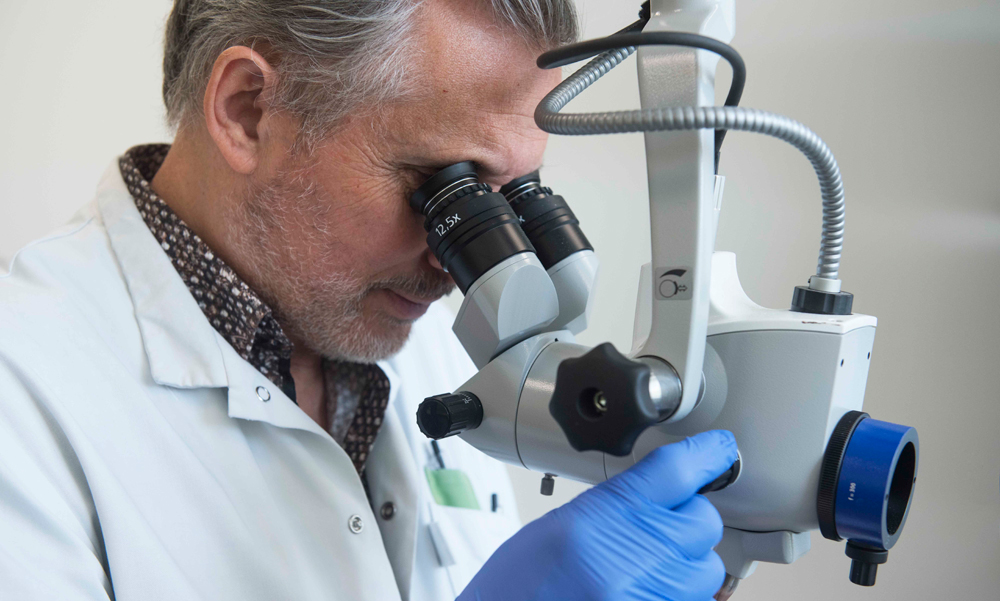Cervical examination or colposcopy
In Belgium, women are advised to have a smear test done at least once every three years from the age of 25. The cells taken are specially treated and then examined in the laboratory under a microscope. If abnormal cells are found, the doctor treating you will contact you to carry out further examinations and possibly start treatment.
The gynaecologist then examines the cervix in depth using a special microscope that can detect small abnormalities and signs of incipient deterioration (this examination technique is known as a colposcopy). If necessary, a small tissue fragment can be taken from this abnormal area for further examination (biopsy).
Read more under the photo.

Frequently asked questions:
- When do abnormalities in the cervix have to be treated?
- How are abnormalities in the cervix treated?
- What aftercare is necessary following treatment of the cervix?
When do abnormalities in the cervix have to be treated?
If the colposcopic examination and/or the biopsy confirm a sufficiently significant abnormality (high-grade lesion - CIN 2-3), treatment is advisable. Otherwise, such lesions can develop over the years to become malignant (cervical cancer). The treatment is therefore purely preventive, designed to avoid any worsening of the situation.
How are abnormalities in the cervix treated?
Abnormalities in the cervix are fairly easy to treat. This is done under local anaesthetic at the gynaecology consultation. Hospitalisation is therefore not necessary for this. If you feel well and do not suffer any blood loss, you can go home after the procedure.
The abnormal area of the cervix is removed using a small electric loop. This technique is known as LEEP conisation. It can be unpleasant, but it only takes a few seconds. The fragment of tissue removed is examined again to ensure that the treatment is complete.
This procedure should preferably be carried out the week after menstruation. It is best not to do it just before or during menstruation, if there is an infection in the vagina or the cervix or during pregnancy (barring exceptional circumstances).
What aftercare is necessary following treatment of the cervix?
You usually experience little if any pain. Blood loss (the same amount as with menstruation) is possible. Use a pad to deal with this, not vaginal tampons.
Sexual relations and the use of tampons are not permitted for three weeks after the treatment. It is also advisable to avoid swimming in a public swimming pool or in the sea.
An initial smear test is scheduled after six months. Subsequent follow-up is also important.
